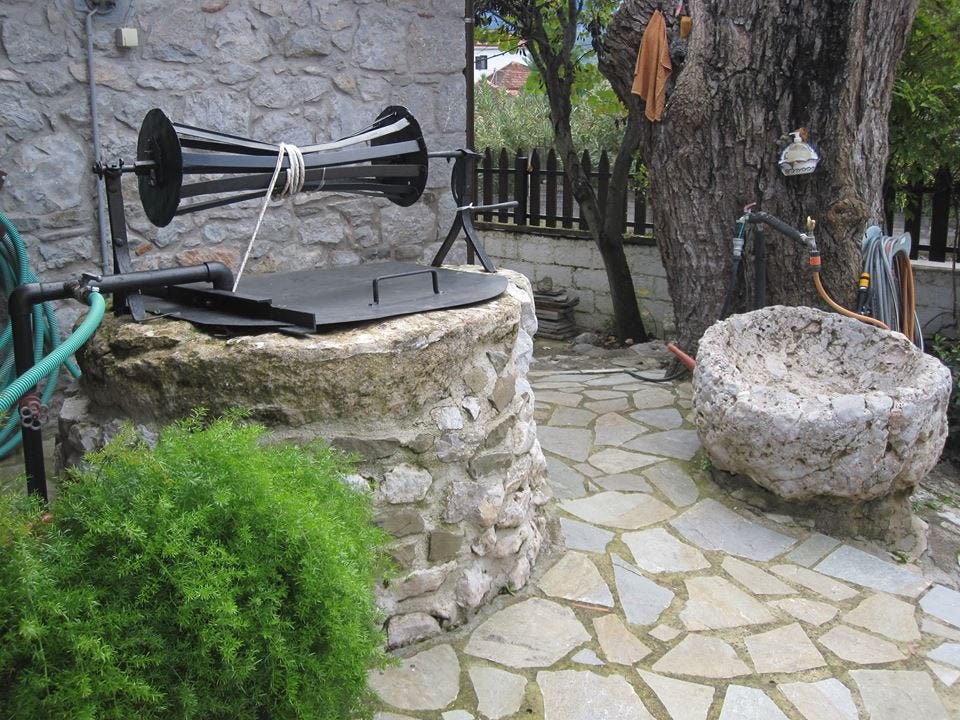In Greek folklore, every well, especially large ones with underground caverns, has its own ghost.
1. Venia’s Well (from Chios)
As we go from the market to the crossroads, beyond St. Efstratios’ church, adjacent to the wall of Mazagka’s house there is a well cutting off the road; it’s narrow and not very deep, but inside it has caves and archways.
Almost every night at midnight, a man emerges from it, riding a wild horse, and he runs, he runs fast and very noisily around the surrounding streets, and then he returns and falls back in the well. The rider is called Venia.
Whoever drinks from this well goes mad. And that’s why, if wanting to ask someone if they’ve lost their mind, they ask him: “Did you drink from Venia’s well?”
2. The ghosts in the wells (Apeiranthos, Naxos)
Krini well has its own ghost, and it doesn’t always look the same, sometimes it appears as one animal, sometimes as another. And in the well called Karava, the ghost is a cat that weaves.
Keep reading with a 7-day free trial
Subscribe to Thyrathen: Greek Magic, Myth, and Folklore to keep reading this post and get 7 days of free access to the full post archives.





